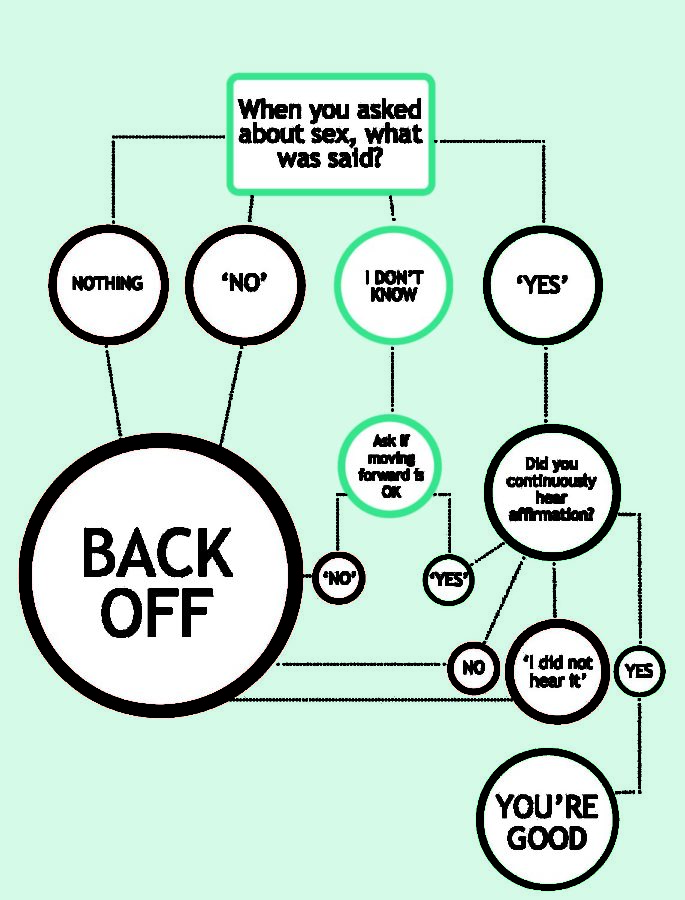Editorial: Sexual assault is on the assailant
consent flow chart
August 23, 2017
A sad reality of our world is the risk of sexual assault. Everyone is at risk for experiencing sexual assault – man, woman, living in a large city or a small town, any race, class, age, everyone. Including college students.
The National Sexual Violence Resource Center reported that one in 5 women and one in 16 men are sexually assaulted in college.
To put this into perspective at Iowa State, in 2016, there were 30,671 undergraduate students, 17,584 males and 13,087 females. If these statistics are accurate that would mean 1,099 men and 2,618 women were sexually assaulted on campus last year.
Sexual assault has been an issue on campuses since at least 1957 when one of the first studies on college sexual assaults was published in American Sociological Review. If people have been getting assaulted at college for at least 50 years, why have we not found a solution?
Because we aren’t focusing on the group of people who are truly at fault – the assailant.
It is not on the victim to protect themselves from getting assaulted. It doesn’t matter what they are wearing, where they are walking or what they are drinking. Sexual assault is never on the victim. We need to stop focusing on teaching people ‘how to not get assaulted.’
It’s also not on the bystander to stop a sexual assault. In some situations it could be dangerous for them to interfere or they could just not realize it’s happening. Sexual assault between those in a relationship is still a sexual assault. In this situation, a bystander may not realize that the interaction is unwanted.
Although it’s great for students to be educated on what they should do if they or someone they know has been sexually assaulted, the only prevention education we should be focusing on is keeping assailants from assaulting.
A lack of knowledge on consent is a major issue on college campuses. The Washington Post conducted a poll of college students in 2015 regarding sexual assault. When asked if they believed that sexual activity without clear agreement between both parties was sexual assault or not, only 47 percent said that this qualified as sexual assault. Six percent believed that it wasn’t and the other 46 percent were unclear.
This statistic is terrifying. If you don’t know the rules of consent we ask that you please take the time to educate yourself, here.
The issue of sexual assault on campus will not be an easy fix. But, if we are all educated on the issue we may be able to lower the number on our campus.







